In an hidden place on the slopes of the Western Carnic Prealps, in the amazing Friuli Venezia Giulia, a few kilometres away from Pordenone there is the small and fascinating village of Polcenigo, a hidden gem that shines by its own light.
Considered Friuli's green jewel box, the enchanting village of Polcenigo is surrounded by lush nature and by lots of water. Besides the numerous streams and brooks that flow into the near River Livenza, the town is home to the enchanting Gorgazzo Spring, a true natural wonder that will leave you speechless.
But Polcenigo hides other surprises too...a town-centre rich in history, the Castle from which to admire the beautiful panorama of the valley, Noble Palaces, an evocative UNESCO Archaeological Site and much more.
A visit to Polcenigo can also be an opportunity to make a tour of Venice and discover the beauty of this city, perhaps taking advantage of the exclusive tourist pass to enjoy numerous benefits and move around Serenissima smoothly.
Find out more about Venice Pass
History and curiosity of Polcenigo, ancient village where the braiding art revives
With its wooden gates, green windows full of flowers, houses in soft colours such as ochre and yellow, narrow stone streets and small wooden bridges, the delightful village of Polcenigo will warmly welcome you, taking you back to a distant and timeless past.
Simply called "al borc" in Friuli dialect, Polcenigo is a village of basket weavers and farmers which still preserves centuries-old craft traditions as the famous art of basket braiding, besides a great historical heritage.
The town took shape from the Castle above it and was inhabited by many people since prehistoric times, thanks to its strategic location and natural resources. Beside the Romans, who left a necropolis as proof of their existence, also the Venetian and Hapsburg people occupied Polcenigo, which in the end became part of the Kingdom of Italy in 1877.
For archaeology enthusiasts, not to be missed is the discovery of a Palaeolithic pile-dwelling village in the marshy area near the river. Today known as the Palù Archaeological Site and part of UNESCO World Heritage, here you will be able to see the remains of the pile dwellings in the water. If you want to admire other archaeological finds then you can visit the Archaeological Museum of Western Friuli.
What to see in Polcenigo, the essential must-see stops
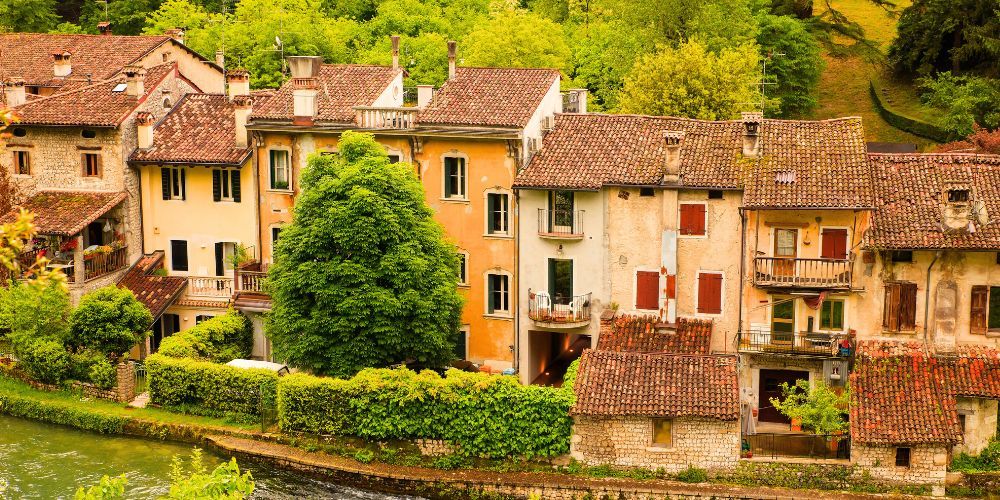
Strolling through the village, you will do a real journey back in time! In the below part of the village you can stroll around Via Coltura, the town's oldest street, where you can admire the Venetian-style palaces like Palazzo Zaro, once owned by the Counts of Polcenigo and Palazzo Pezzuti. On the other side of the town you will find Palazzo Scolari, declared by the Italian State to be of historical and cultural interest: here, you will be able to access its beautiful back garden through a small bridge and then cross a path to reach a point where you can enjoy a stunning view.
On your way up to the Castle, you cannot miss the Church of San Giacomo with the adjoining Franciscan monastery, one of the first built in the Friuli region. A place where sacredness meets art with its medieval geometric decorations and beautiful painted ceilings. But what makes it a truly unique place is the mix of styles from different eras: in its 1700's interior you will be amazed by its 1300's frescoes and 1500's paintings.
After passing the monastery you will reach the top of the hill that dominates Polcenigo, where stands the fascinating Castle, a fascinating building that will intrigue you with its mysterious aura. You will be truly enchanted by the view over the entire valley, and if you use a bit of imagination you can also delve into its historical memory. Built in the Middle Ages as a real fortress with the village at its foot, due to a fire it was completely destroyed and then rebuilt it in a completely different style, that is Venetian villa.
What to see in Polcenigo, nature and beauty between springs and parks
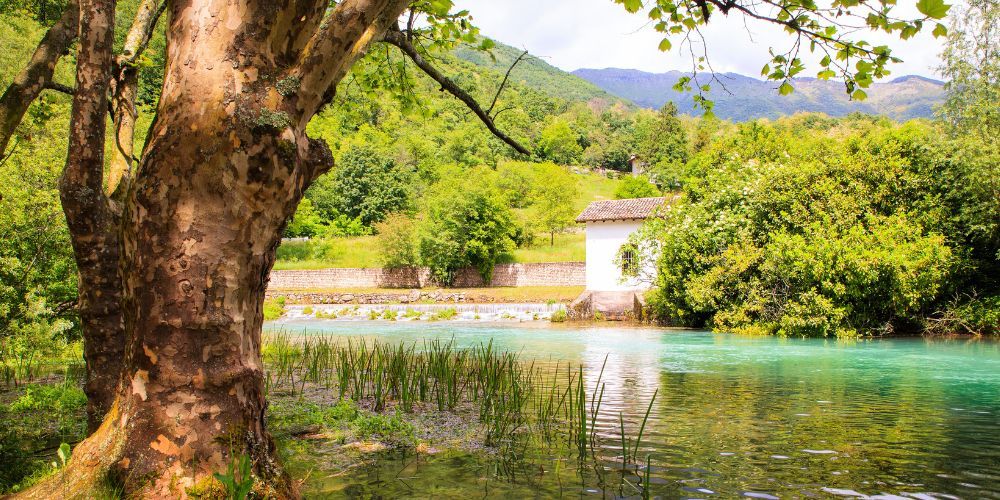
As already mentioned, the main characteristic of Polcenigo is its link with water. It is an ideal place to relax with the sound of flowing water, breathe fresh air and take excursions into the countryside. The village is crossed by the Livenza River, known as the green river because of its unparalleled beautiful and intensely coloured water, which you can admire from close up along the path that runs alongside it.
You certainly can't miss the Gargazzo Spring, a deep blue body of water that will remain in your memory for a long time, not only for its beauty but also for its mysterious history. It originates from an underground cave, one of the deepest in Europe, and although it has been explored several times, unfortunately also with dramatic consequences, its real depth still remains a mystery...However, if you pay attention, you will be able to see through its crystal-clear waters what its bottom hides: even a statue of Christ standing at the entrance to the cavity, visible from the surface at over nine metres depth!
Not far from the Garagazzo Spring, we recommend you also take a trip to the Sorgenti della Santissima, where the Livenza River has its source, near which you will find the Church of the Holy Trinity.
To complete your nature tour in Polcenigo, we also recommend not to miss the San Floriano Rural Park, actually considered the only true rural park in Italy: here, immersed in the greenery, a 900 metres path will accompany you on your silent walks, on foot or by bicycle.
Polcenigo, the crafts of braiding and local traditions
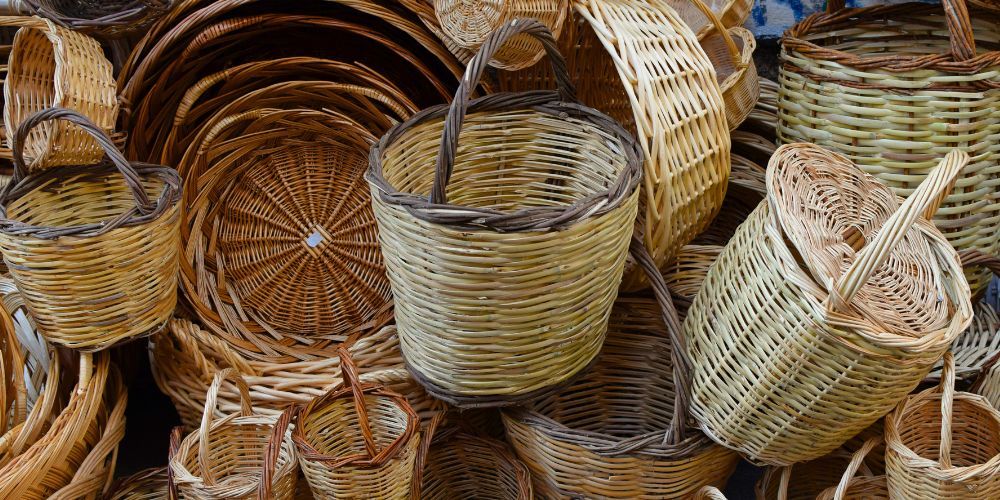
Polcenigo is a quiet and peaceful village, living at the same pace of its lush nature, but throughout the year it hosts numerous artistic and traditional events.
The exhibition of nativity scenes is one of the most popular events in the village, dating back to 1200's. During the Christmas time you can lose yourself in the old alleys of Polcenigo accompanied by a feast of music and lights, being surprised by the many characteristic simulacrums of the nativity that invade the village. In fact, you will find them placed along the streets, in the courtyards, on the window benches or in the gardens. A real show!
Another event not to be missed is the centuries-old Sagra dei Thést, or basket fair (usually at the end of summer), a festival that will give you a flair of the true soul of the village. In the past, farmers used to go to this fair to buy handmade baskets by the braiding art: since then, this event has been intended to celebrate the craft art of braiding, a form of art typical of Polenigo whish risks to be lost. In this warm and welcoming festival, in addition to the exhibition of hundreds of baskets (thést in dialect), there will be also concerts, entertainment shows and of cour typical gastronomic products, such as malga cheese.
Where is Polcenigo and how to get there
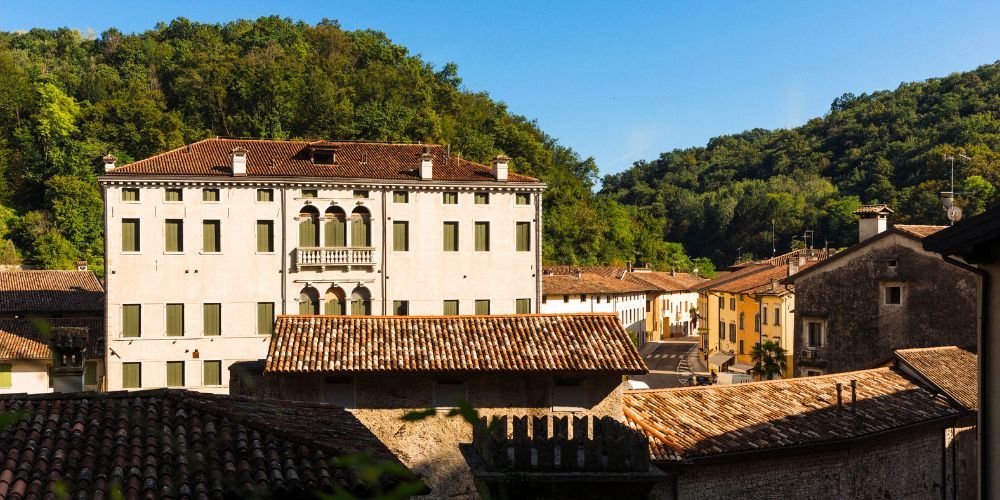
The village of Polcenigo is located in the western side of the province of Pordenone, not far from the border with Veneto (province of Belluno), in the mountainside territory of the Carnic Prealps or Friuli Prealps.
To get to Polcenigo from Pordenone you can choose from various transportation possibilities, using both private and public means.
By car it takes less than 30 minutes along the SP74, SP31 and SP29, also passing through the nearby village of Budoia. By bus there are two ideal routes: lines 12-11 Pordenone-Fontanafredda-Polcenigo (about 45 minutes) and lines 13-11 Pordenone-Roveredo-Aviano-Budoia-Polcenigo (about 75 minutes). Alternatively, you can travel by train taking the regional trains Pordenone-Sacile and then Sacile-Budoia-Polcenigo, reaching the centre of the village on foot from here.
For the sportiest travelers, the bicycle is also an excellent way to get around the area. On two wheels, in fact, it is possible to ride towards Polcenigo easily within an hour, crossing mainly the provincial roads and country roads, enjoying enchanting rural landscapes against the backdrop of the mountains on the horizon.
Polcenigo therefore represents an ideal destination to discover also for those who love cycle tourism, traveling on their bicycle to discover a more sustainable tourist experience to truly enjoy the territory and all its beauties and emotions.
About the author
Written on 01/10/2024

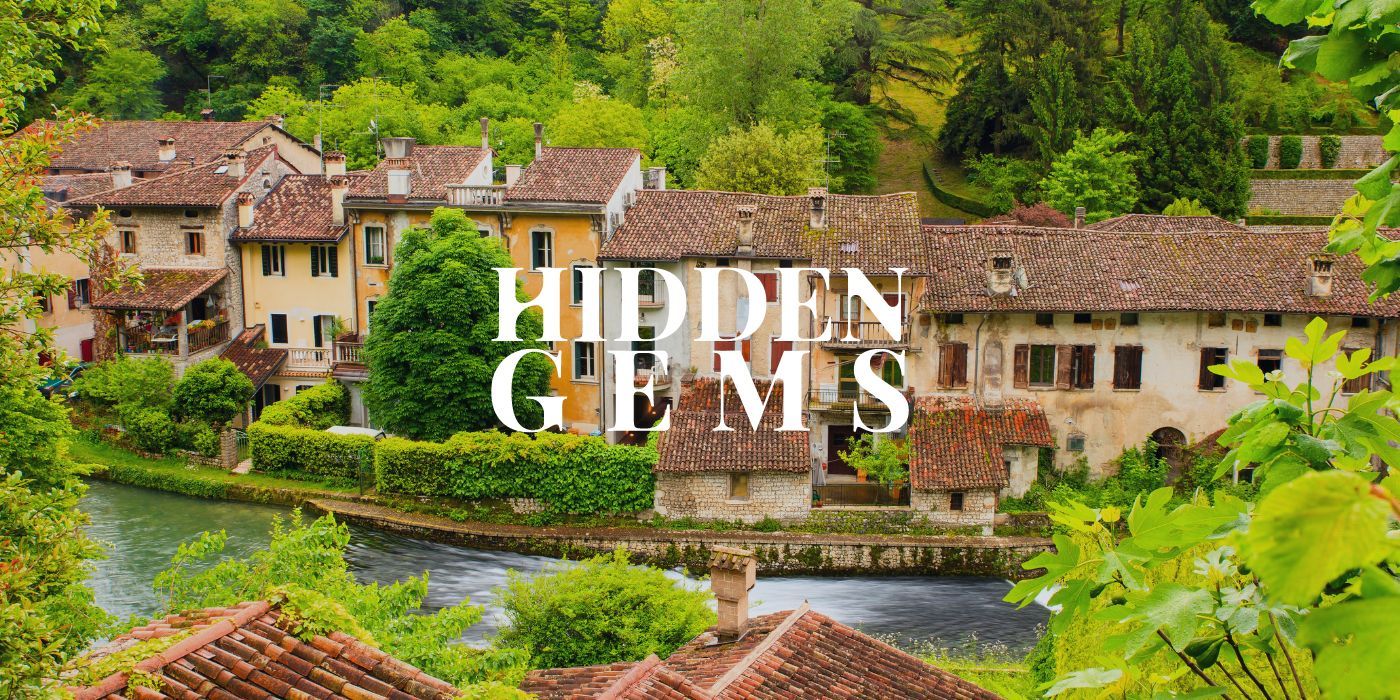

Marika Lagarese
Let’s find out what to see and do in Polcenigo, a beautiful village in the Pordenone area immersed in the greenery where to revive the braiding art.